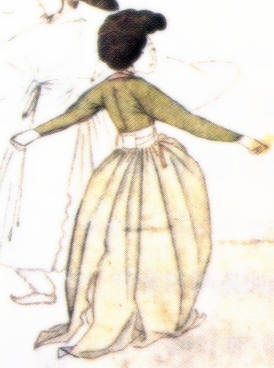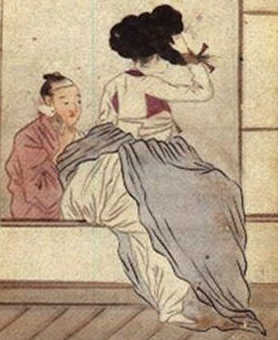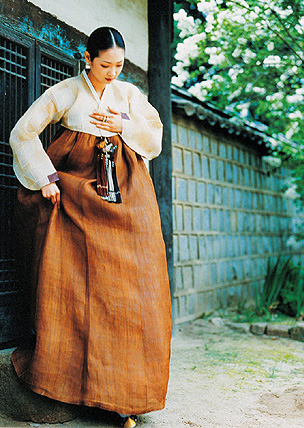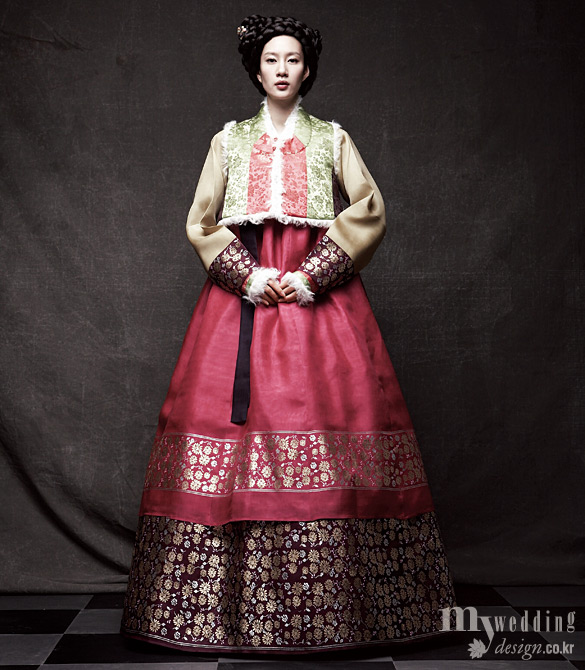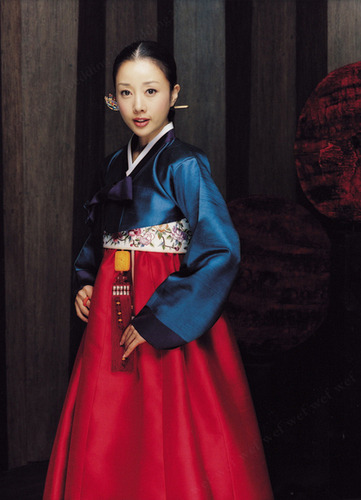Women's Hanbok
Traditional/ Modern Women's wear
Traditional women's hanbok consists of jeogori, a blouse shirt or a jacket and chima (skirt) which is usually worn full.During Joseon Dynasty jeogori (shirt or blouse) of women's hanbok became gradually tightened and shortened. Although prior to sixteenth century jeogori was baggy and its length reached below the waist line, after the Imjin War economic hardship on the peninsula may have influenced the closer-fitting styles that would use less fabric. By the latter half of the dynasty the close-fitting, short jeogori reached such an extreme that they scarcely covered the breasts and therefore women had to wear another piece of cloth which was called heoritti or heorimari. Although heoritti was originally meant to be worn as an undergarment it became fashionable to expose heoritti by the late eighteenth century and the trend continued well into the end of nineteenth century. The common and lowborn classes, however, often eschewed the heoritti altogether, as a way of indicating that they had given birth to a son.
